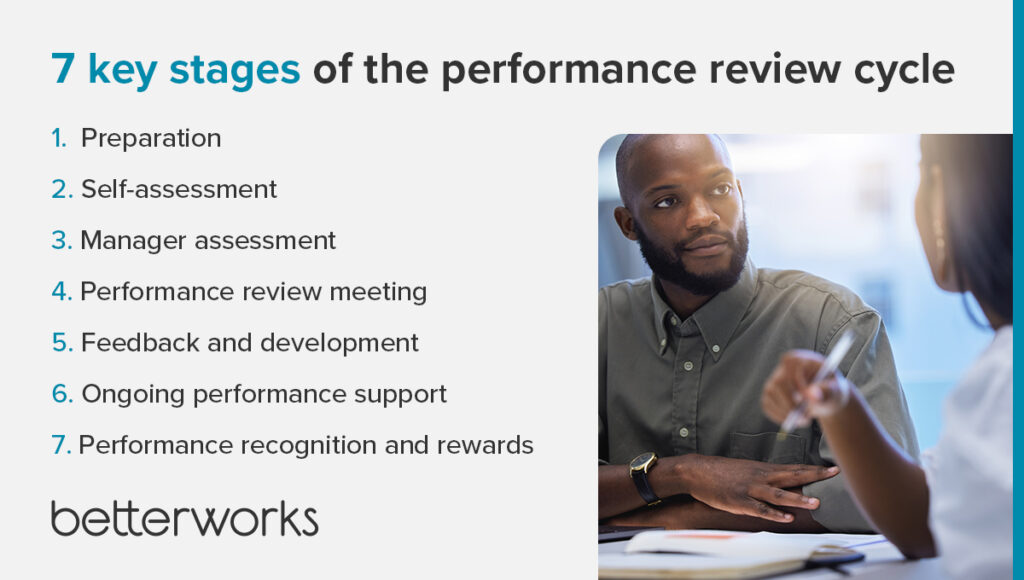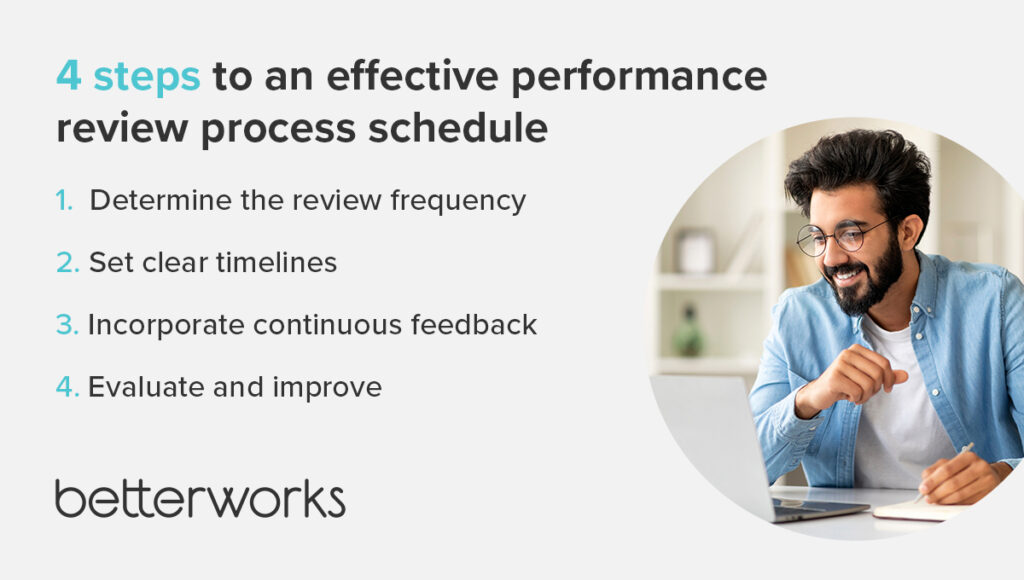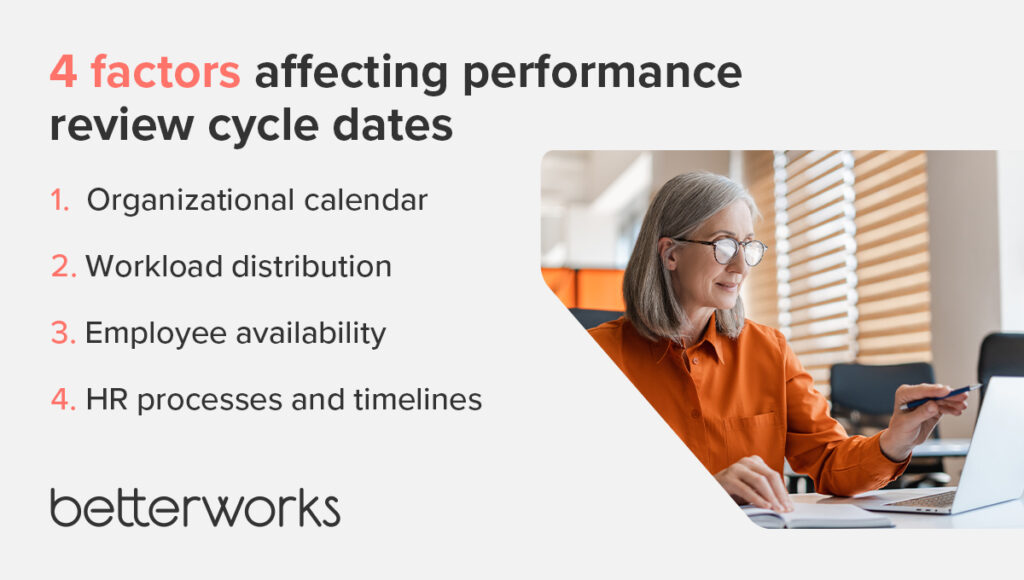Traditional annual performance appraisals are giving way to modern performance review cycles that prioritize real-time conversations, development, and alignment with strategic objectives. This shift isn’t a passing trend; it’s become a strategic imperative for HR and business leaders seeking to unlock their workforce’s full potential.
Truly enabling performance relies on flexible goal-setting, frequent feedback, and ongoing conversations between managers and employees. Talking about performance just once or twice per year — as is common in the traditional performance review cycle — simply doesn’t offer enough support to employees.
Enablement makes a huge difference in performance. Employees who feel enabled are more likely to be productive, confident, and engaged, according to our 2023 State of Performance Enablement report. On the flip side, employees who don’t feel enabled to perform are more likely to feel stressed and burned out.
By embracing a modern performance review cycle, you can transform performance management from an administrative process to a strategic driver of success.
Redefining the performance review cycle for today’s teams
Many companies are reworking their performance management process to meet modern workforce needs. Here’s how shifting to a model of timely communication and feedback transforms the traditional performance review cycle.
How performance review cycles are evolving
Instead of conducting performance reviews once or twice a year, organizations are moving toward more frequent check-ins. These can be monthly, quarterly, or even more often. Shorter cycles allow for more timely feedback and course correction in the flow of work.
Importantly, elements of the traditional annual performance review cycle remain important when using a frequent-feedback approach. For example, traditional cadences can support ancillary programs related to compensation and development. Formal appraisals held a few times per year can also incorporate performance management processes and prompt managers and employees to realign individual and organizational goals.
When supported by a continuous flow of real-time performance data, formal reviews offer direction for development goals, succession planning, and growth.
The role of technology in modern performance management cycles
Performance management software platforms offer features specifically designed to facilitate real-time feedback. These tools allow managers and employees to document and track performance goals, achievements, and areas for improvement. All employee data lives in a central platform, including feedback and recognition from managers.
Performance software solutions provide interactive dashboards and visualizations that present performance data in a clear and intuitive manner. HR leaders and managers can monitor performance trends, identify outliers, and compare performance across cycles. Visual representations, such as charts and graphs, make it easier to understand and interpret performance data, leading to better decision making.
Technology also enables aggregated feedback from multiple sources, including peers, skip-level managers, and external stakeholders. Performance management software can collect and analyze this feedback data for a comprehensive view of an employee’s performance.
7 key stages of the performance review cycle
You can use the cadence of traditional performance review cycles to structure the overall performance review process. Here are key stages of the performance review cycle to consider.
Preparation
Before the review cycle begins, managers should gather relevant data and documentation, such as performance metrics, historical feedback, and self-assessments. They should review goals and expectations from previous cycles to assess long-term alignment.
Because managers have had ongoing conversations with their reports, they should already have mountains of performance data to help them prepare for formal reviews. Intelligent performance management software, like Betterworks, can use artificial intelligence (AI) to uncover trends and insights.
Self-assessment
During this stage, employees evaluate their achievements, challenges, strengths, and areas for improvement during the performance period. Self-assessments provide valuable insights for upcoming review discussions.
Employees can use data from ongoing conversations to remind them of goals they’ve achieved, skills they’ve gained, and potential targets for improvement.
Manager assessment
Managers assess employee performance based on their observations, feedback from other stakeholders, and verified performance data. They evaluate whether employees have met goals, demonstrated and developed the right competencies, and contributed to team and organizational goals.
Insights from performance data are instrumental in assessing employee performance. Such data can be more objective than observations alone, helping managers avoid unconscious biases in performance reviews.
Performance review meeting
The performance review meeting is a scheduled discussion between the manager and employee. Managers share their assessment of performance and highlight strengths, areas for improvement, and opportunities for growth. Employees can ask questions, seek clarification, and provide additional context.
During these meetings, all participants should have access to performance data, both to be informed and as a reminder to keep the conversation fair and objective. Stay focused on goals and how the employee contributes to business value since the last performance review meeting.
Feedback and development
Don’t spend too much time looking backward, though: Train managers to shift gears to setting goals and pursuing career development. Managers and employees should collaborate on development plans that outline SMART goals, procure resources, and identify opportunities for on-the-job learning.
Ongoing performance support
This stage involves ongoing support and coaching to help employees implement their development plans and improve performance.
Train managers to track employees’ goals and progress in performance management software. This creates a living data set that helps everyone track progress while informing the next round of performance reviews. Not only should managers and employees have frequent performance check-ins, but they should also track these conversations and resulting action items over time.
Some organizations incorporate midcycle check-ins to review progress and make adjustments. These are semi-formal conversations that allow managers and employees to make sure goals remain aligned with what the business needs.
Performance recognition and rewards
The final phase involves recognizing and rewarding employees who receive high performance ratings. Managers should acknowledge employee achievements with appropriate rewards, recognition, and incentives. This phase reinforces positive performance and motivates employees to continue performing at a high level.
Develop a compensation philosophy to help employees understand the types of rewards they can strive for — and when to expect them during the year.

How to design an effective performance review process schedule
Here are some key steps to guide you in creating a schedule that maximizes the benefits of performance reviews.
Determine review frequency
How often will your organization hold formal performance reviews? Common frequencies include annual, biannual, and quarterly. Consider the nature of the work, the pace of organizational change, and the availability of resources when setting your review cadence.
Clearly communicate the performance review cycle schedule to all employees and provide training on the process and expectations.
Set timelines
Establish timelines for each phase of the performance review cycle. This process includes deadlines for self-assessments, manager assessments, review meetings, feedback and development planning, and midcycle check-ins. Communicate these timelines to managers and employees, and make sure this information can be accessed on demand, such as through a shared calendar or inside performance management software.
That said, build in flexibility so that your review cycles can adjust to changing circumstances and remain relevant and effective.
Incorporate continuous feedback
Integrate continuous feedback and coaching into the performance review cycle schedule. When this occurs as part of ongoing check-ins between managers and employees, you can quickly assess goal progress and, as necessary, correct course, offer additional support, and give recognition.
Evaluate and improve
Continuously evaluate the effectiveness of the performance review cycle schedule. Gather feedback from managers and employees to identify areas for improvement. Regularly review the schedule to ensure it remains aligned with the organization’s needs and evolving best practices.

4 factors affecting performance review cycle dates
Variables that affect your performance review cycle include organizational goals and timelines, workload distribution, employee availability, and the need for alignment with other HR processes. By considering these factors, you can ensure a smooth and efficient performance review cycle that meets employee and organizational needs.
Organizational calendar
The organization’s calendar and business cycles can impact performance review cycle dates. For example, if your organization operates on a fiscal year other than January 1, you might want to align the performance review cycle with that timeframe. Similarly, if there are specific busy periods or seasonal fluctuations in workload, scheduling reviews during quieter periods might be more practical.
Workload distribution
Effective performance review cycles take time and require attention and thoughtfulness. Consider your workforce’s workload and how it’s distributed when scheduling these cycles. You don’t want to overwhelm managers with too many reviews at once, as this can compromise the quality and effectiveness of the reviews. Likewise, if employees are juggling performance reviews and business-critical deadlines, they might struggle to do either to their best ability. Spreading reviews throughout the year and considering workload fluctuations can help managers and employees allocate enough time and attention to performance evaluations.
Employee availability
Besides employee workloads and obligations, consider planned vacations, leaves of absence, or other time-off requests that may impact employee or manager availability. By considering employee availability when scheduling performance review cycles, organizations can ensure that everyone is available, engaged, and ready to have meaningful discussions about performance.
HR processes and timelines
Aligning performance review cycles with other HR processes and timelines is crucial for several reasons. First, this alignment contributes to a consistent, coherent HR strategy and a holistic approach to employee development and performance management.
Second, alignment allows for performance data to integrate with other HR systems, such as compensation and succession planning. Having one source of truth with data leads to better decision-making and more strategic workforce management. Third, aligning performance review cycles with other HR processes reduces administrative burdens by streamlining workflows and minimizing overlapping tasks.

Streamline your performance review cycle with technology
Performance review cycles have evolved from a once-a-year administrative task to a strategic driver of success. By embracing continuous feedback, development opportunities, and alignment with strategic objectives, you can unlock the full potential of your workforce and foster a culture of growth.
Organizations that harness the power of technology to streamline performance review cycles will gain a competitive edge. By leveraging tech capabilities, organizations can optimize their performance management strategies, drive employee engagement, and ultimately achieve sustainable success in today’s ever-evolving business landscape.
Want to learn more? Check out our ultimate guide to managing employee performance.
Interested in improving employee performance?


